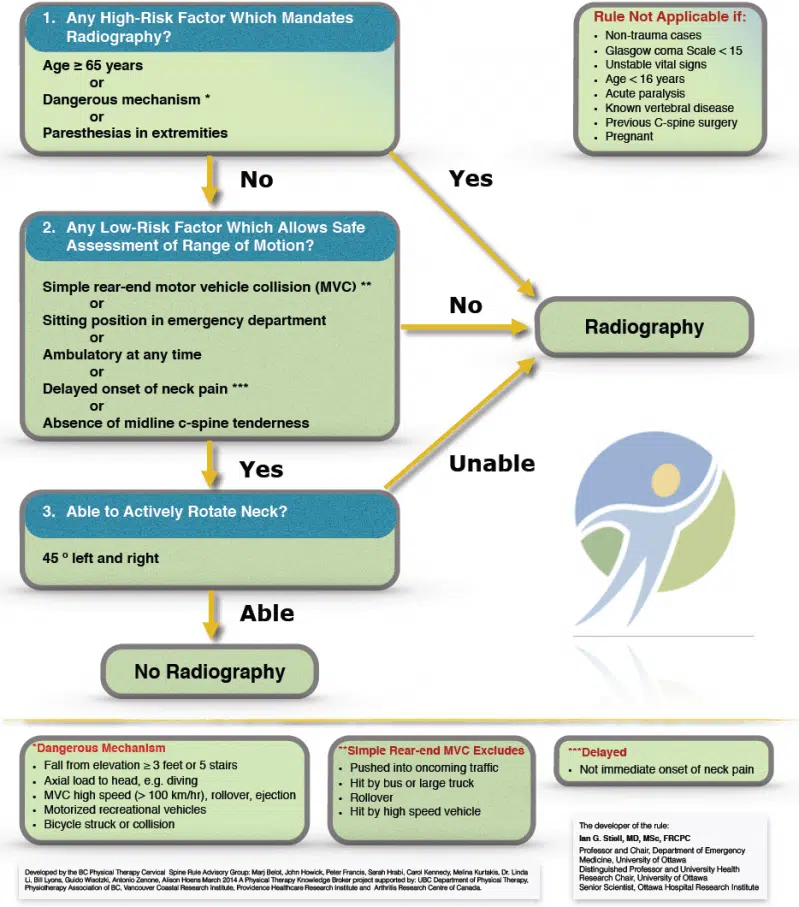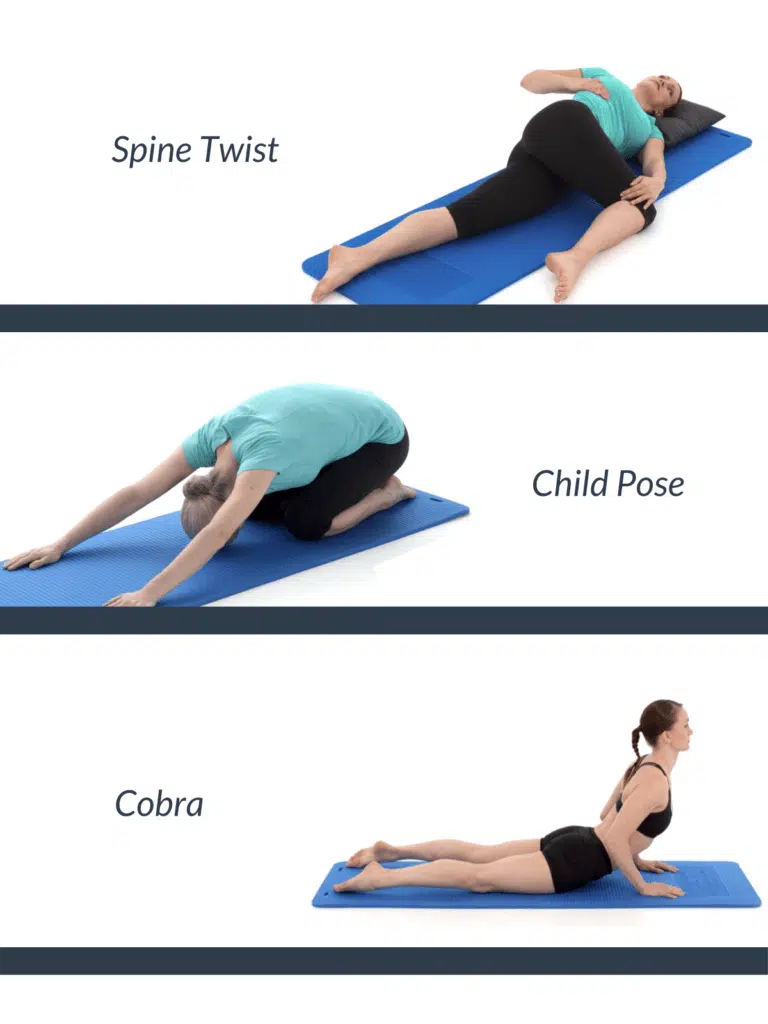Free eBook
Whiplash
What is Whiplash?
Whiplash is a generic term used to refer to injuries of the back and neck that occur when the spine moves back and forth very quickly. This happens often in motor vehicle accidents (MVA). The collision causes the spine to move quickly forward and then “whip” back again. The movement was likened to the movement made by a whip, and so the term “whiplash” was coined. The injury usually affects the neck but can be anywhere in the spine. To make things simple, I will only be referring to the neck from here on.
Did I damage my spine?
As the neck moves quickly back and forth injuries can occur to any of the tissues of the neck. These include muscles, ligaments, bones, nerves and other connective tissues. Whether the spine is “damaged” depends on the severity of the injury.
Whiplash injuries can be very minor or very severe. A minor injury probably means none of those tissues mentioned above are actually damaged, they have just been irritated. However, more severe injuries like bone fractures and nerve injuries can occur.
Should I go to the Hospital?
If you have any of the following symptoms then you may have a more serious whiplash injury and should consult a medical professional immediately:
- Worsening headache
- Changes in your vision
- Dizziness
- Difficulty speaking or swallowing
- Nausea
- Fainting or black outs
- Numbness in your arms, legs or face
- Loss of strength in your arms, legs or face
- Incontinence (bladder or bowel dysfunction)
- Numbness around your pelvic area
Is it serious?
Whiplash injuries are graded by the nature of the symptoms and the degree of tissue damage. In medicine, whiplash injuries are called Whiplash Associated Disorders (WAD) and are divided into 4 categories.
- WAD I – neck pain, stiffness, or tenderness
- WAD II – neck pain, stiffness, or tenderness and decreased range of motion
- WAD III – neurological signs such as altered sensation, altered reflexes or muscle weakness
- WAD IV – fractures
Do I need an x-ray or MRI?
To determine if someone needs an x-ray or MRI, medical professionals use the Canadian C Spine Rules. If you follow this flow diagram and answer the questions you will end up at “no radiography” or “radiography” (meaning x-ray/MRI). If you answer the questions and end up at “radiography” you should consult a medical professional immediately. If you are not sure, just call us.

How long will it take to get better?
The majority of Whiplash injuries resolve within three months. Some take far longer and some people end up with long-lasting symptoms.
Do I have a concussion?
Whiplash injuries occur when the spine is jolted back and forth quickly. This movement can also cause the brain to move back and forth within the skull. This back and forth movement of the brain is what causes a concussion. You don’t actually need to hit your head to sustain a concussion. For these reasons many people who have sustained a whiplash injury also have a concussion. Unfortunately, this often goes undiagnosed and untreated.
Concussion responds very well to rehabilitation, so it’s important not to miss this diagnosis. If you have any of the following symptoms, you may have a concussion and should consult a medical professional.
- Headache
- Pressure in the head
- Nausea or Vomiting
- Dizziness
- Blurred Vision
- Balance Problems
- Sensitivity to light
- Sensitivity to noise
- Feeling slowed down
- Feeling like “in a fog”
- “Don’t feel right”
- Difficulty concentrating
- Difficulty remembering
- Fatigue or low energy
- Confusion
- Drowsiness
- Trouble falling asleep
- More emotional
- Irritability
- Sadness
- Nervousness or Anxiety
What should I do?
There are lots of things you can do to make this less unpleasant and speed up the resolution of the symptoms. What you ultimately decide to do will depend on your circumstances. If the pain isn’t very intense, you can certainly just wait it out and carry on as normal. If the pain is very intense, then you will probably want some help.
Consult a Professional
This would certainly be my top pick. While the other things on this list will definitely be helpful, there really is no substitute for the guidance and expertise of a professional. It’s like doing your tax return, you can certainly do it yourself, but it would be much easier and more effective to consult an accountant. So the first question is which type of professional? This is where I’m going to show my own bias a little. As a physiotherapist, I honestly feel like a rehabilitation professional such as a Physio, Athletic Therapist or Chiropractor would be the best person to see first.
These professionals can do a full assessment and provide a clinical diagnosis. They can refer you to the appropriate doctors or surgeons for scans and further testing if they feel it is needed. They can also help you understand the problem and design a rehabilitation program that will help you recover as fast as possible.
We have all of these professionals available here at Collegiate Sports Medicine. If you would like to have a chat with us about how we might be able to help, we’d love to hear from you. Just give us a call or click the button below.
Active Rest
This may sound like a strange term. The idea is to stay active but only to the degree that you feel able. I like to use a green light, orange light and red light system. Green is no pain, orange is mild pain and red is severe pain. Generally speaking, you can do whatever you want as long as you feel no pain or mild pain. If the pain becomes severe, you have to stop. Over time, you will find you are able to be more and more active.

In this sense, no activity is “off limits.” You can go to work, do housework, go for a run, lift weights, go swimming, go camping … whatever you like. Your only restriction is that you must try to avoid that severe “red light” pain. If doing any of these causes severe pain, then leave it till next week and try again!
Daily Walk
As long as it doesn’t cause severe “red light” pain, then a daily walk really helps you to recover more quickly. It need only be 5 minutes if that’s all you can manage. However, you can go for an hour or more as long as you only have mild “orange light” pain. If you can only manage a few minutes, I’d encourage you to try and do it a few times a day.
Exercise
As the saying goes, “motion is lotion.” We want to keep your body moving, and including some regular stretching and mobility exercises will really help keep you going. There are no “right” or “wrong” exercises here as long as you follow the green, orange and red light system. If an exercise causes severe “red light” pain, then just leave it for now and try again in a few days.
These are a couple of exercises I recommend often. Feel free to try them and see if they help…

Manual Therapy
Manual Therapy includes treatments like soft tissue massage and joint mobilisations. There are many different kinds of therapy and different therapists who will have different skills.This is certainly something you may discuss with your therapist should you decide to work with a professional. There are a few things you can do at home such as using a tennis or lacrosse ball to help loosen up the muscles. Again, the traffic light rules apply. There should be no severe “red light” pain. If there is, you need to go more gently.
Just press the ball up against the low neck between you and a wall or the floor. Move around to work the ball as if the ball is giving you a massage. You can do this for as long as you like but I would suggest starting with about 3 minutes and then see how you feel afterwards.
Should I keep working?
As I mentioned above there are no “off-limits” activities and this includes work. You need to avoid activities that provoke severe “red light” pain. If your work currently provokes “red light” pain then you shouldn’t do it yet. You may need to take a few days or a week off and then try again. Or you could try doing your work for less hours each day. You could speak to your employer about doing “modified duties” so that you can avoid the tasks that cause severe pain but still work.
As you recover you will find you are able to do more and more. Those tasks that caused severe “red light” pain will only cause mild pain, so you can start doing them again. Gradually build up until you return to your full workload. We call this a “graded return to work”. If you are working with a therapist they should be able to liaise with your employer to help guide you through the process.
Summary
Whiplash is a general term used to describe the injuries to the neck and back that people often sustain when the spine moves back and forth very quickly. This includes a spectrum of injuries from very mild to very severe. A qualified professional can help you determine the exact nature of your injury and guide your recovery. If you would like some help, give us a call or click the button to book a free consultation.
